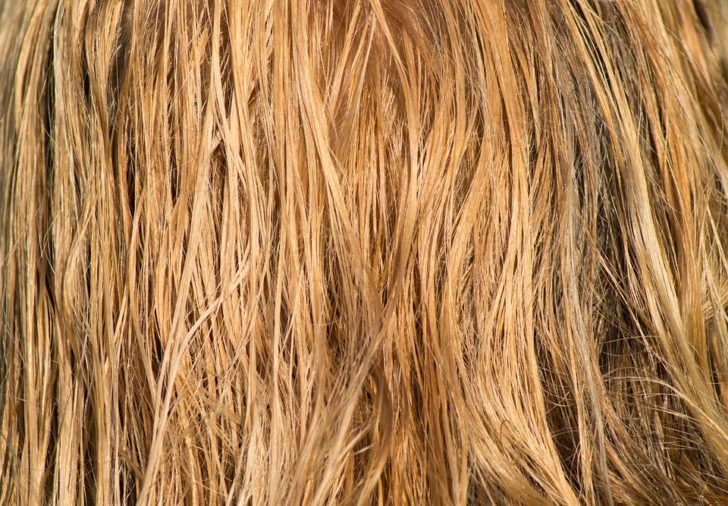Better hair care from nanotech

Hair formulations, especially hair color products, contain color precursors, which are oxidized on hair surface by hydrogen peroxide, which can be damaging to hair, leaving it thinner and dry after treatment. Nanotechnology researchers have developed a surface engineering technique for hair coloring that does not use chemical reactions and therefore does not damage the hair.
The technique relies on physical forces acting at a very close range, instead of chemical reactions. The findings were published in Nanoscale ("Self-assembly of clay nanotubes on hair surface for medical and cosmetic formulations"). "We use a nanometric tubule clay powder, add it to a water-based dye/drug solution and simply wash hair with it, coating the surface with a thin layer of the microtubes," explains Abhishek Panchal, a PhD Student in Micro and Nanosystems Engineering at Lousiana Tech University and first author of the paper. "The coating, which colors the hair, is not noticeable via sight or touch but is only visible under the microscope." The new technique works in a ubiquitous fashion and without the need for any special solvents or harmful alkali additives typical for hair products. By following the process laid out in the Nanoscale paper it becomes possible to prepare a hair formulation with natural colors without a single synthetic compound.
The material used are halloysite clay nanotubes, a biocompatible clay with a diameter size in the nano-range and length of app. 1 micrometer. Under suitable conditions, dye-loaded clay nanotubes self-assemble in a set pattern on the hair surface during hair drying via physical adsorption. This new technique allows the use of water-insoluble dyes, which previously have not been suitable for hair care.
"The most obvious use of our findings is the improvement of cosmetic and medical hair care formulations by using eco-friendly, harmless aqueous clay colloids with hair dyes," notes Prof. Yuri Lvov, who together with Prof. Rawil Fakhruillin from Kazan Federal University, led this work. "We demonstrated that it is possible with our technique to color even grey and damaged hair in under 5 minutes.”
Medical treatments, like anti-lice and hair loss prevention, are some of the therapeutic applications of this hair surface engineering technique. In in vivo studies, the team demonstrated a highly effective anti-lice formulation using the halloysite clay nanotubes.
"The same surface engineering approach is applicable to textile microfiber modifications because natural textiles like like wool, silk, cellulose, but also biomimetic synthetic textiles, have similar chemical composition," says Panchal. "This makes it possible to modify textile fibers with regard to coloring, flame retardancy and many other attributes. Consider that we can modify our tubes to deliver a wide range of molecules including enzymes, antibiotics, polymers and perfumes. Water-insoluble compounds can also be encapsulated into the tubes and then be used as safe aqueous clay colloids."
Source: https://www.nanowerk.com/spotlight/spotid=50979.php
Original article: https://dx.doi.org/doi:10.1039/C8NR05949G